Welcome to Marketing Speak. I’m your host Stephan Spencer, and it’s my pleasure to welcome onto the show Elizabeth Marsten. Elizabeth is the Senior Director of Strategic Marketplaces Services at Tinuiti, based out of Seattle, WA where she is building out program development, advertising and sales support on retail media channels, such as Walmart, Target, Instacart, and Kroger.
If you’re wanting to learn the ins and outs of comparison shopping engine feeds, programmatic advertising, and the online marketplaces of Amazon, eBay, Walmart, and Jet, you’re in the right place!
And now, on with the show!
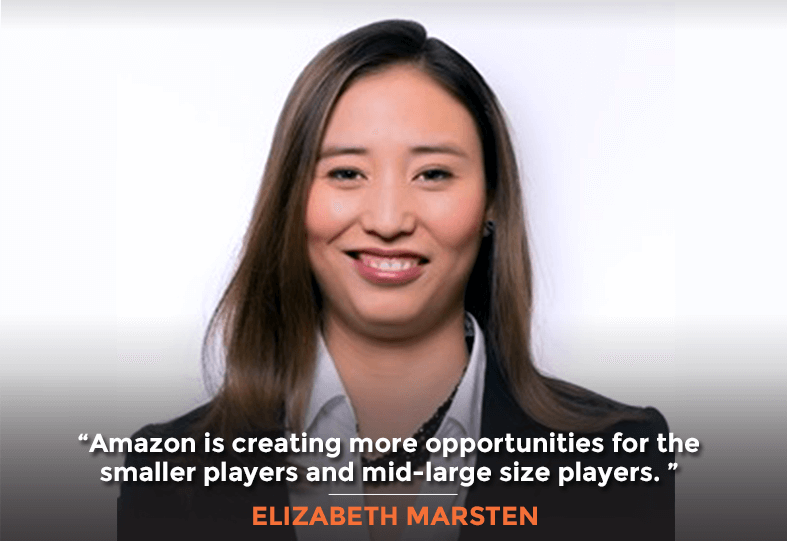
In this Episode
- [00:20] – Stephan introduces his next guest, Elizabeth Marsten, the Senior Director of Strategic Marketplaces Services at Tinuiti, based out of Seattle, WA, where she builds program development, advertising and sales support on retail media channels.
- [01:25] – Elizabeth narrates her journey from learning and applying SEO and ending up in retail media, where she is currently at.
- [04:43] – Stephan wants to know the opportunities and strategies for smaller businesses to compete with Amazon.
- [07:47] – Elizabeth explains about Amazon advertising and Amazon DSP.
- [09:44] – Stephan asks about the benefits and gaps comparing Amazon advertising with Google advertising.
- [12:00] – Elizabeth expounded on the benefits and opportunities of programmatic ad campaigns.
- [16:50] – Stephan inquires for those not doing a product shopping feed approach, doing organic and dabbling with some paid search on how they can get started with the comparison shopping opportunity.
- [20:07] – Elizabeth communicates about the implication of the Buy Box and the factors to be in there.
- [22:07] – Stephan wants to know what aspects to take to qualify as Prime eligible so that if somebody has Amazon Prime, they don’t have to pay for shipping when they order products.
- [24:48] – Elizabeth elaborates about flywheels at Tinuiti and Amazon.
- [27:18] – Elizabeth shares her role model about adapting, pivoting, growing, and evolving and further reveals her favorite tools and books.
- [29:14] – Connect to Elizabeth Marsten on Twitter and LinkedIn to get in touch with her. Also, check out her column in Adweek about retail media.
Transcript
Elizabeth, it’s so great to have you on the show.
The Art of SEO It’s so great to be here. Thank you. I’ve been following you for a long time. I read The Art of SEO book probably almost a decade ago now. It’s been a while.
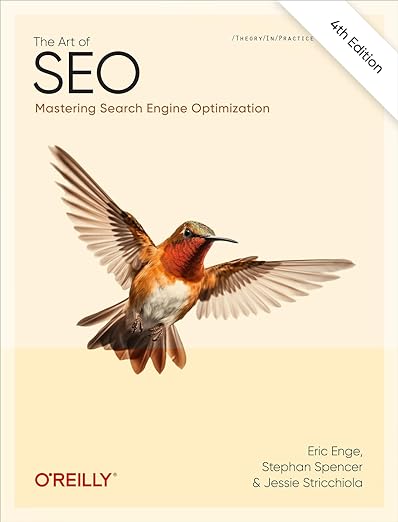
That’s awesome. So back then, it was the green cover with the hummingbird on it. Now it’s orange. It’s only 1000 pages. It keeps growing every edition. If you need some good bedtime reading because you can’t sleep, I highly recommend it.
So what do you do these days? If you’re no longer learning and applying SEO, what are you up to? We got your bio, of course, but give us a little more of the journey of how you ended up going from working on SEO and agency stuff to doing what you do now.
Sure thing. It’s a long and kind of a twisty road, but I actually think in the end, ending up in retail media where I am today. When we say Marketplace Strategic Services, that’s the long-winded way of a couple of years ago, we weren’t quite sure what to call it. So I started out at Portent, which was a small digital marketing firm back in 2006. I thought it was called paperclip marketing. That’s not what it’s called.
I learned that very quickly. I spent eight years there learning about SEO, paid search, social, analytics, content for the web, in particular, web design and development. You name it, we did it. Then from there, I went to CommerceHub, which is larger. It’s a product. They have several different products.
Specifically, if you want to go back again to that old school, I was in the department that was previously Mercent, which was acquired by CommerceHub. That’s product feed management. My purview was Google, Microsoft, and a lot of comparison shopping engine feeds, but we also had Amazon, Walmart, Jets at the time, eBay, Newegg, and Sears, all of those marketplaces. So that’s where I picked up a lot of the marketplace training.
Amazon is creating more opportunities for the smaller players and mid-large size players. Share on XFrom there, I went to Tinuiti where I am the Strategic Marketplace Services Lead, which means I was placed from paid search. I changed over essentially into a marketplaces department, which was at the time is heavily Amazon, as you do. What I ended up doing was building out all the service lines for Walmart, Instacart, Target, Kroger, you name it, the sell site platforms like Criteo, PromoteIQ, and CitrusAd. Then continuing with every retailer under the sun after that, just depending on our book of business, demand, and where they’re at.
Where do you see the opportunities for smaller businesses to compete against Amazon? Are there opportunities or is Amazon basically going to eat everybody’s lunch?
Absolutely. First, yeah, they’re going to continue eating lunch next year, like all of our lunches. We can’t undo that. There is definitely an opportunity for smaller businesses with the proliferation of third-party marketplaces. So not just Amazon will have these third-party marketplaces, Walmart has one now.
Target has Target Plus, very highly curated. Best Buy has been in Bed Bath & Beyond I’ve been talking about there. Kroger has one now, it’s called Miracle. It’s a third-party tool software that overlays a site. They have a whole ship-to-home service that’s coming out.
There’s definitely space to play there for some of those smaller brands, particularly if they have a differentiating proposition.
There’s definitely space to play there for some of those smaller brands, particularly if they have a differentiating proposition. If we think like the food space because that’s what we talked about the most because that’s the most amount of growth and that’s because it’s the least amount of transacted online. When you talk about things like gluten-free types of foods, vegan, responsibly sourced, or made entirely from lentils, whatever it is, they have that differentiating proposition, which helps them stand out at a retailer, but also against some of the biggest CPG brands in the world.
Yup, all right. Do you see newer or different strategies put in place by smaller companies when they’re trying to compete with Amazon or even just play on the Amazon ecosystem? It seems like a strategy that’s been employed amongst Amazon retailers is to try and figure out kind of reverse engineer what the competition is targeting in terms of products and where they might source those products, just kind of R&D everything, rip off and duplicate. Have things evolved, or is that still just the name of the game on Amazon these days?
If you ask me today, that’s the name of the game, but what we’re planning for tomorrow and what Amazon is planning for a lot tomorrow with their recent developments in brand, pages, in-brand stores, live stream, and other ways to showcase and show off a brand, they’re definitely creating more opportunities for the smaller players and mid-large size players to be in. From the R&D perspective, yeah. That’s still very prevalent.
In fact, we had a client just the other day that produced a hilarious marketing campaign about the comparison of the Amazon Basics version of their product, but making fun of it in a way and then they list their benefits like why it’s different. You can do this thing or you can do this thing. This is why it costs a little bit more, but it is genuinely different.
They just embraced it head-on. Unfortunately, that is just how it is in terms of R&D, but again, they have these capabilities now on Amazon to capture brand pages, to capture brand voice, to create upper-funnel awareness. There are different marketing types now. It just goes beyond sponsored products on Amazon.
What you have on Amazon should be your bestsellers and things that move fast, so they don't take up storage inventory and cost. Whereas with Google, it's D2C. Share on XSpeaking of sponsored products. Is something that pretty much anybody that has a product for sale on Amazon, even an author, should be learning about and playing in that space? Should I, with my Art of SEO book and several other books, be advertising on Amazon to get more people to buy the book and to rate and review it?
Sure. There will be different ad types that are available based on the product itself. For example, if your book is a physical book that’s sitting in an FBA warehouse kind of thing, there are different options available probably to you than the one that’s printed on demand. But it also depends on what is the content that you can create to support that.
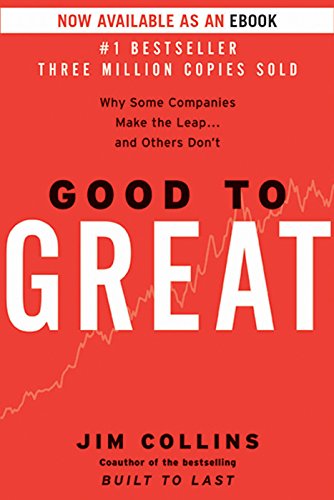
Jim Collins
As long as there is a physical product that goes in a box and can be rated and reviewed, you can do pictures of and do that brand building. There’s no reason you can’t do some of the upper funnel advertising like, for example, Amazon’s DSP, and take care of different awareness, in-market segments, or even cross target to competitor books.
For our listener who is not familiar with Amazon DSP, could you explain that?
Amazon DSP or demand side platform, it’s programmatic. It’s a programmatic platform similar to the Index Exchange, Trade Desk, DV360 that they have built and is their proprietary program. But they, most importantly, have what they call Amazon O&O, owned and operated. So that is on the Amazon site. That is on the sites that they own like IMDB that you can be on those placements.
They also do have third-party capabilities or networks that they partner with that you can choose separately. But from a performance standpoint, the Amazon O&O has been very impressive in terms of reaching folks that are in-market, that are in category. And then they can close the loop so well because, on an Amazon O&O, they bring them back to the Amazon product detail page where they can buy. It’s very convenient that way.
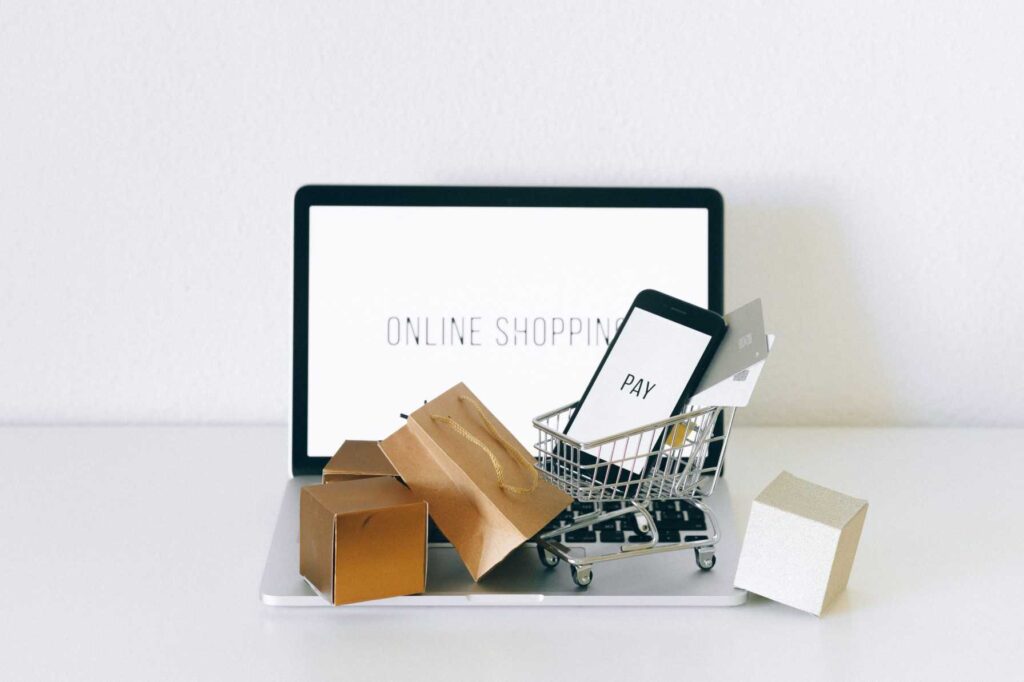
What do you see as some of the benefits, maybe some of the weaknesses or gaps comparing Amazon advertising with Google advertising? Why would I want to be Amazon advertising? Why would I want to be Google advertising, both, or neither, perhaps?
It always just depends on what you’re doing. For Google advertising, you obviously have control of your supply chain fully. Because somehow, once I advertise on Google packed and shipped somewhere, usually in your warehouse, close to, or some sort of third-party fulfillment logistics center that you’ve worked out. When you do it with Amazon, it’s a whole different ball game in terms of the logistics that have to happen before you even get to advertising.
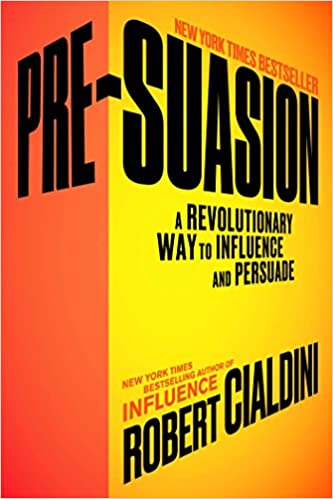
That’s why I say it’s really difficult to decide. It’s not an either, it’s an ‘and’ in a lot of cases. What I would always recommend is the assortment that you have on Amazon needs to be able to fulfill certain delivery requirements. Whether or not it is Prime eligible because it’s in an FBA warehouse. Are you a seller fulfilled Prime? Are you able to do it yourself being able to generate those reviews? It’s a very closed universe, so I always put Amazon in a separate box in that way.
Then Google in a separate box in terms of your driving usually to a D2C. You wouldn’t drive to an Amazon product page necessarily. You could obviously drive to a Facebook shop, Shopify, or whatever it is, but the ability to close the loop in terms of conversion. That’s why I say that it’s an ‘and,’ and not an ‘or‘ because you’ve got your Amazon universe.
Usually, I would also recommend that for my earlier note on assortment, that you don’t sell the exact same thing on Amazon that you do on your website because then, you start to run into conflicts between the two. Because Amazon does go and look and see if you’re reselling it for less somewhere else. They don’t like that. So it is better to have unique assortments between the two.
Honestly, what you have on Amazon should be more of your best seller kind of things, things that move fast so they don’t take up storage inventory and cost you because they do charge by the foot. Whereas with Google, ideally, it’s D2C. Those are sunk costs in a sense like your own warehouse, your garage, or wherever it might be.
Don’t sell the exact same thing on Amazon that you do on your website.
Got it. Okay. Let’s talk a bit about programmatic ad campaigns. Assuming our listener doesn’t know much about programmatic, what would you walk them through so that they understand the benefits and opportunities?
I would say, welcome, because I also like programmatic, recovering paid search person or evolving paid search person, however you want to say it. Programmatic was the field that I worked in the least. But as retail media is evolving, what they’re finding, and especially with the privacy concerns that are happening around cookies, so now we’re taking cookies way. Now first-party data is king, walled gardens, all that kind of jargon.
But when it comes to programmatic, the number one thing I understand is the difference between going out on the open exchange. Whether or not you’re using a platform like Trade Desk, like DV360, which is Google’s, Index Exchange. Yahoo is still there. That’s the one thing I’ve heard of Yahoo most recently about it in the programmatic universe.
There’s a lot of exchanges out there. But really, what you do is you go into their platform and you’re buying audiences. You’re buying these audiences usually at a CPM, and then you’re also paying a percentage to the platform for fees. It’s probably the most black box feeling of the digital marketing channels these days.

There are some that are seeking to kind of bring more visibility to that and how it breaks down. Amazon actually does a pretty good job of that. Criteo is doing a good job of that. I think we’re going to see it more, especially as we go into retail media. For example, we say, programmatic, Walmart just launched their own DSP via The Trade Desk.
They partner with The Trade Desk, and The Trade Desk built a specific instance of their platform for Walmart’s first party data. In the future, say January, I’ll be able to log into The Trade Desk’s platform. Once Walmart enables me or the brand to be able to access the data, I will be able to then create campaigns that use Walmart’s first party data out on the open web and the exchange with The Trade Desk. It’s really cool.
Awesome.
A lot of paperwork, but really cool.
From a performance standpoint, the Amazon O&O has been very impressive in reaching folks that are in-market and in category. Share on XYeah. Do you see Walmart actually competing effectively with Amazon, or that horse has already won the race?
Yes and no. It’s one of those things that, again, with the Amazon and Google comparison, when I think about Amazon and Walmart, are they the same? Yes and no. Because when we think about ecommerce and we think about advertising dollars, Amazon, Google, and Facebook are the winners by far. There’s a huge gap. It’s years in the making to be able to overtake that.
But then the question is, could they or should they be able to overtake them? Because they’re not the same. Walmart is a $600 billion retailer worldwide. Physical store locations in the United States, there are 4800. It’s almost 5000 stores. That reach is insane.

So should you be looking at Walmart the same as against Amazon? I would argue, at this point, no. They’re just not the same. Can you generate value and volume from them both? Absolutely. They certainly have it. Amazon’s online presence is always going to be bigger in that sense. Walmart’s offline presence should always be bigger in that sense, at least for the next five years.
Do you have an example of a really nimble, clever online retailer who’s done well with both Amazon and with Walmart? I would try and find as small of an example as possible. The smaller the business, the better because you’re probably not talking to an executive at a billion-dollar company right now.
What I would say is it tends to be very category-specific. Smaller brands that have, like I was talking about earlier about it, a specific brand recognition, like a reason to be. Why do you exist? Because you are the only dry pasta that is made entirely from lentils and has zero sugar. Whatever it is, you have your reason to be.
When it comes to being at an Amazon and a Walmart, really, all you have to do from there is you’ve got your assortment, you know where it is, you’ve got your fulfillment so you can take pages out of both of those books very easily. Then from there, from an advertising perspective, it is literally a matter of just signing up and going to. It is also a matter of knowing where your audience is.
In the example of the lentil pasta, the question is at Walmart, how many customers know or seek out lentil-based pasta versus on Amazon. Demographically speaking, probably not that many. Maybe your content on Walmart or the way that you seek reviews is going to be more awareness generated. The benefits of an educational than on Amazon where it might be—because you can target in-market audiences—more conversion-focused. Very doable. I just would never do the same approach for both.
It’s a matter of knowing where your audience is.
Yeah, okay. For our listeners who are not doing a product shopping feed approach, they’re just maybe doing organic and perhaps dabbling with some paid search, how would they get started with the comparison shopping opportunity there?
Usually, comparison shopping, and I’m a little bit rusty on it, but they’re still out there and it is a product feed base. I do recommend if you’re going to do multi-channel, so you’re going to do Amazon, you’re going to do Walmart, you’re going to do eBay, you’re going to do Connect City, or whatever it is that you do, start to look at that product catalog software like a Feedonomics or GoDataFeed, those kinds of platforms.
You might also look to see if your website has it built-in in a sense. A lot of Shopify, WooCommerce, and BigCommerce have plugins or capabilities to help you just connect those. For example, BigCommerce, I know because I’ve seen it. We’ve talked about it, they’re a partner. You can enable the Walmart app and then become a third-party seller via Walmart and go through their platform to apply for and be. But if you’re only doing D2C, you don’t need that functionality. You don’t have to turn it on. It’s just there if you need it.
From an organic standpoint, also those platforms tend to be, and you can argue with me here, pretty solid as far as their SEO and their content capabilities. If that’s the case, obviously, that’s where you spend a fair amount of your time. Then you can reuse that content to build those product pages via feed either manually or through your BigCommerce or Shopify site.
Right. Would you advise that somebody get an agency to help them with this process, or do you think it’s straightforward enough, they could do it in-house?
If you’re down as a seller account, you’re not selling at all.
They could do it on their own.
Okay. Do you have any examples?
Yeah. If your catalog is less than 20, usually you can do it. For a Walmart, there’s a spec sheet. You can just download it, you can enter manually the different products. Now it can be a pain in the ass over time if you want to continually update it. The only time that I would recommend if you have less than 20 products and software is if you have a lot of volatility in your inventory.
So something goes in and out or you need to have buffer stock put in there and maybe your cart doesn’t enable that, or you need to be able to send inventory updates to Walmart, eBay, or whoever it is more than once a day or more than once a week, you might want to look into that.
Got you. Do you have an example of a nice win that company that wasn’t doing the shopping-based feeds, and then they started it and got lots of additional revenue?
I would say, there’s a blog called Marketplace Pulse, which is a really good one to watch for across all of these marketplace channels, but one, in particular, was about three years ago. You can still find it today. I think you can see where eBay went with, it is Adidas. They started selling on eBay. That is an article on Marketplace Pulse. You can see that.

I think if you look at eBay’s commercials that they have today, I mean, there’s a commercial today that is focused just on sneakers. It has become very clear as a category that eBay is a strength there. We did see them, enable, set up that shop, turn it on, turn it up, and it’s going great.
Cool. Excellent. Back to Amazon for a few minutes. What’s the implication of not being in the Buy Box? How does one get to be the featured retailer in the Buy Box?
The implication of the Buy Box is if you’re not in it and if you’re not familiar, the Buy Box is that yellow button that says add to cart underneath the price on a product detail page. Basically, if you’re not winning the Buy Box, you don’t exist. I think it’s like 95% of people click that button rather than go to that little tiny link underneath there that says, also these other sellers.
Amazon's online presence is always going to be bigger. In comparison, Walmart's offline presence should always be bigger, at least for the next five years. Share on X
Usually, it’s on a little bit more obscure items that maybe they’re not a lot of inventory of like collectibles and such that you would seek that out. But for the Buy Box, you just got to be in there. There’s a lot of small factors that go into it, but the biggest factors are always around price. Amazon, you know you’re always going to get the best price. Sales velocity, how often are folks buying that? So if it’s popular, they’re going to continue to bring that item up because that’s what people want.
It’s very similar to Google search results in that way. Think of it as like your bounce rate. People come to that page and then they leave, God forbid, click the other sellers link that probably feeds the algorithm a negative signal, as well as fulfillment methodology. So that’s a big one as well. If it is like saying an FBA warehouse somewhere and it’s Prime eligible. If the user, in particular, has added filters on at all like they only want Prime or they have a certain price point, those can all play into it as well.
Paying to store at Amazon is not a good business
Right. So FBA, for those who aren’t familiar, is Fulfillment by Amazon. That means that you’re shipping your product to an Amazon warehouse. They’re holding on to that inventory, they’re charging you, and then they take a percentage when the product sells on Amazon.
Yup. Those little fees add up really fast. That storage fee and that’s what I was talking about earlier about product velocity, things that you want to have on Amazon or things that you know are going to move because paying to store at Amazon is not a good business.
Being Prime eligible isn’t necessarily a given. What does it take to be Prime eligible so that if somebody has Amazon Prime, they don’t have to pay for shipping when they order your product?
If it’s in an FBA warehouse, it’s usually Prime eligible. That’s one of the biggest selling points of doing that program. Otherwise, you can do something like seller fulfilled prime where you qualify. There are several things that you have to do to show Amazon that you can qualify to hit those performance metrics consistently over time. The biggest one obviously gets the item out the door and to the customer in the two-day window, that two-day Prime window. In a nutshell, that’s it.
They do have obviously other things that you have to do in terms of paperwork and to prove that out over a certain amount of time. Those that get it, it’s tough to continue to execute on and maintain.
Do you know anybody who’s lost their Prime eligibility status?
Probably. I can’t name any off the top of my head, but I’ve seen my share of horror stories of either losing the Prime badge. I’d say the best worst horror stories are less around losing Prime status and more around things like, where you get taken down completely.
If the seller loses the listing or is suspended entirely, that can take weeks to resolve.
If the seller loses the listing or is suspended entirely, that can take weeks to resolve. In fact, there’s a new practice of law starting to pop up where there are these lawyers or consultants that used to work in Amazon, that all they do is work on cases to get sellers reinstated. Those are the things that keep you up at night more than losing a Prime badge, honestly. On a scale of worse to worst, I guess, this may be worst.
Right, and where would you put having your Facebook ads account banned? Would that be even worse than losing your status on Amazon?
Anything where you’re dark. I would clarify the difference between the Amazon seller account and Amazon advertising. If you’re down as a seller account, you’re not selling at all. That is like the worst of the worst. Then I would put close above that, the Facebook advertising and then the Amazon advertising.
It’s interesting. Facebook and Amazon advertising are very similar in terms of how they fuel a flywheel. You can have a Facebook page, you can have a Facebook shop, and all that kind of stuff. But if you build it, no one comes. In either instance, they’ve made it so you have to buy advertising almost just to get it going. New products, new stores, whatever it is.
Now you used the word flywheel. I know there’s an approach or some sort of methodology, I forget who teaches it about the flywheel, but could you elaborate a bit more on this flywheel?
Sure. It’s funny. At Tinuiti, we have the flywheel too. We call it the forever flywheel. It’s a little bit different, but it takes a page out of that instance. In Amazon’s case, their flywheel is more about how do they get customers to keep coming back and back and back and back and buying?
Provide the customer with what they’re looking for at a great price fast.
It’s similar when you think about Google and their searches. How do you get the user to come back and search again and search again and search again? It has to do with being able to provide the customer with obviously what they’re looking for at a great price fast, and then do it again. Is it what I’m looking for? Is it a price that I’m willing to pay?
Here’s what I’m looking for, how much is it, when can I have it? Rinse and repeat. That leads to good customer experience, and a good customer experience will always get you to come back. Same with Google’s search quality. What’s the thing I’m looking for? Oh, there it is. I have my answer. All right, next, next, next.
In Tinuiti, it’s more around talent retention and client results. We have kind of all spoken out that way. Client results, client feedback, employee happiness, then growth, and then reinvest it back in technology and people like me who work with things we call strategic marketplaces that end up being retail media.
I remember where I first heard about the flywheel. It was from the book Good to Great by Jim Collins. The Flywheel Effect.
In Tinuiti, it's more around talent retention and client results. Share on XYes. We’re all in.
Yes. Awesome. What did I not ask you that I really needed to?
I would say retail media. It’s interesting how I ended up here versus where I’m going to go. I need more people to come with me. Because when I think about who does this work or who’s qualified to do this kind of work with the retailers and understand the nuances there, it’s paid search folks. First and foremost, it’s marketplace folks, advertising folks.
It’s interesting how I ended up here versus where I’m going to go. I need more people to come with me.
These are my people that understand CPC models, attribution windows, and those nuances, but also, sometimes we just don’t know. Sometimes, Google rolls out an update, adds a new ad type, or changes how everything’s going to be accounted for and you just kind of go, yup, that’s our new reality today, okay. So being able to roll with it is definitely a skill set to have.
Who do you look up to, or do you see as a role model in that regard of being able to adapt, pivot, grow, and evolve?
I’m a big fan overall of a lot of these emerging brands. It’s less about people and more about how the entire organization move and adapt. I listen a lot to Pivot, listening to Kara Swisher and Scott Galloway talk about the market overall and I think about what that means to me.
I love the Remarkable Retail Podcast with Steve Dennis and Mike LeBlanc. They’re old-school retail, but now looking at it from a digital focus. They are where I’m going.
Awesome. Do you have any favorite tools or resources other than what we’ve discussed already?
Obviously, I’m a big fan of Tinuiti’s toolset. We are API partners. So Mobiusx, I get to work with the retailers directly, what that looks like, and how we’re going to attack that. I’m a big fan right now of a lot of share of voice platforms, so your DataHawk and your Helium 10. That kind of gives you an idea, at least, digitally, what the digital shelf looks like. You can get an idea from a category perspective of what you’re in for.
It’s less about people and more about how the entire organization move and adapt.
Awesome. Do you have a favorite book?
Actually, it’s not really a marketing book.
It could be anything.
If it’s a regular book, The Count of Monte Cristo has always been my favorite forever and ever. But from a marketing perspective, probably the biggest fan of Pre-suasion of Robert Cialdini.
He goes by Bob if you’re friends with him.
No. Unfortunately, not. But I did enjoy the book.
He’s been on this podcast. Awesome. How does our listeners get in touch, follow you, learn from you, work with you, all that?
Awesome. I’m on Twitter, @ebkendo , which is a Japanese martial art, or if you can’t remember that, my name is pretty easy. I am on LinkedIn and I respond as fast as I can. I do keep that open pretty much all day. I would say those are the two best.
I also have a column now on Adweek where I write about retail media about once a month. So if you’re interested in hearing more about retail media itself, that’s a good place to start. I just did a post on 2022 predictions or what’s going to happen in retail media.
Awesome. All right. Thank you, Elizabeth. Thank you, listeners. We’ll catch you in the next episode of Marketing Speak. I’m your host, Stephan Spencer, signing off.
Important Links
LinkedIn – Elizabeth Marsten
Adweek – Elizabeth Marsten
6 Retail Marketing Predictions for 2022 – Elizabeth Marsten
Dr. Robert Cialdini – previous episode
Your Checklist of Actions to Take







About Elizabeth Marsten
 Elizabeth is the Senior Director of Strategic Marketplaces Services at Tinuiti, based out of Seattle, WA where she is building out program development, advertising and sales support on retail media channels, such as Walmart, Target, Instacart, Kroger and Criteo Retail Media.
Elizabeth is the Senior Director of Strategic Marketplaces Services at Tinuiti, based out of Seattle, WA where she is building out program development, advertising and sales support on retail media channels, such as Walmart, Target, Instacart, Kroger and Criteo Retail Media.







Leave a Reply